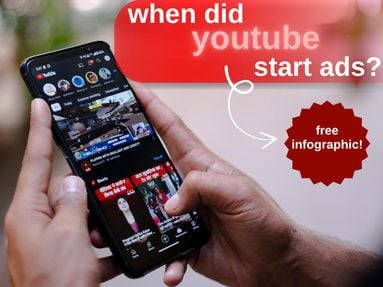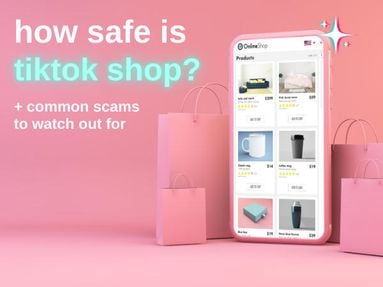Musical.ly once held the number one spot in the App Store, with a user base of over 70 million users until, seemingly overnight, it disappeared, leaving TikTok in its place.
So what happened? Turns out Chinese tech company ByteDance bought it for $1 billion dollars in 2017, and subsequently merged it with TikTok. TikTok is now the world’s most popular video sharing app, so the move paid off - but many users mourn the loss of Musical.ly and wonder why the two apps had to combine in the first place.
Today we’ll take you on a deep dive into the rise and fall of Musical.ly, the merger itself, and how TikTok has dominated social media ever since.
Key Points:
What Was Musical.ly?
What It Was: A short-form video sharing platform for lipsyncing videos
Availability: Mobile app on Android and iOS
Years Active: 2014-2018
Demographic: English-speaking pre-teens and teenage girls

Musical.ly (spelled in its stylized form, but pronounced like ‘musically’), was a video sharing app that focused on users creating and sharing lipsync videos anywhere from 15 seconds to 1 minute long.
Users (known on the platform as ‘Musers’) could choose their favorite tracks to lipsync alongside, adjust the speed, add filters or effects, and browse trending content to interact with each other.
It was popular, too, with over 100 million monthly active users and a total of 200 million registered accounts during the four years it was active.
The Birth Of Musical.ly
Musical.ly was originally created by Chinese entrepreneurs Alex Zhu and Luyu Yang in 2014. The two met at eBaoTech and raised a quarter of a million dollars to start an educational app, Cicada, which ultimately failed.
With their remaining funds, the pair started Musical.ly, and the fortunate timing of the TV show Lip Sync Battle being released shortly after launch rocketed the app into stardom.
Thanks to strategic moves like placing the Musical.ly watermark on shared videos and collaborating with Warner Music Group, the app had the number one spot on the Apple App Store by 2015.
Key Features

In terms of layout, Musical.ly was nearly identical to the TikTok we know today, with a vertical-scrolling video layout; the ability to like, comment, and share content; and individual user profiles to follow.
Some now-familiar TikTok features also had their start on Musical.ly, including the For You page (originally called the Features page), and the ability to duet with other users. There were also Ask A Question features, and the ability to choose a Best Fan Forever which allowed users to choose followers who could then duet with them.
Musical.ly focused primarily on community building, rather than on simply consuming content. Its layout prioritized engagement, and all of its key features encouraged users to interact with one another during and after content creation.
A few viral TikTok creators even got their start on Musical.ly, including Loren Gray, Lisa and Lena, Baby Ariel, Mackenzie and Maddie Ziegler, Jacob Sartorious, and JoJo Siwa.
Why Did Musical.ly Fail?
So why did they change Musical.ly to TikTok in the first place if it was so popular?
Well, originally ByteDance claimed that after acquisition Musical.ly would continue to operate alongside TikTok, but in August 2018 they opted to shut it down and effectively combine it with TikTok, adopting key features (like Duets and the For You page) and focusing on general shortform video creation rather than lipsyncing.
The main reason for the merger was to create a single, powerful social platform that combined the audiences from both apps (Musical.ly was popular with English-speaking users, while TikTok had the Asian market hooked).
Since the apps were so similar, combining the two would offer users from around the world the best of both worlds, while unifying their audiences.
As a result, TikTok became even more powerful and popular, reaching over 1 billion monthly active users in 2021 and becoming the most downloaded iOS app worldwide.
When Did Musical.ly Merge With TikTok?
Musical.ly officially became TikTok on August 2nd, 2018 - but the app was purchased by ByteDance in late 2017. Founders Alex Zhu and Luyu Yang sold it to the tech giant for approximately $1 billion dollars, following its historic rise to the top of the App Store rankings in 2016.
For users, the transition was seamless and every account and piece of content created on Musical.ly was migrated to TikTok automatically. That meant users simply had to log into TikTok instead, and all of their profiles and videos would remain untouched, allowing them to jump back into content creation without a hitch.
Many users were upset by this change, preferring to keep the two apps separate, but despite general criticism from some loyal Musical.ly fans, TikTok has shown no signs of slowing down and as of 2025 it has over 1.59 billion monthly active users worldwide.
Frequently Asked Questions
What was TikTok's old name?
TikTok is called Douyin in China and Hong Kong. While some assume it used to be called Musical.ly, it was actually merged with that app back in 2018 - TikTok did in fact exist separately.
Who did TikTok merge with?
TikTok merged with the lipsyncing app Musical.ly in 2018 after ByteDance acquired the latter in 2017.
Who is the owner of TikTok?
Chinese tech company ByteDance owns TikTok, and Zhang Yiming owns ByteDance.
Who is the richest man on TikTok?
The founder of TikTok, Zhang Yiming, is the richest person in China - but the richest person on the TikTok app is arguably Charli D’Amelio.
What is the old name of TikTok?
TikTok was originally called A.me when it launched in China back in 2016, but quickly rebranded to Douyin. It’s still called Douyin in China and Hong Kong, but users outside of those regions know it as TikTok.
Who owns 100% of TikTok?
Chinese tech company ByteDance owns TikTok.



